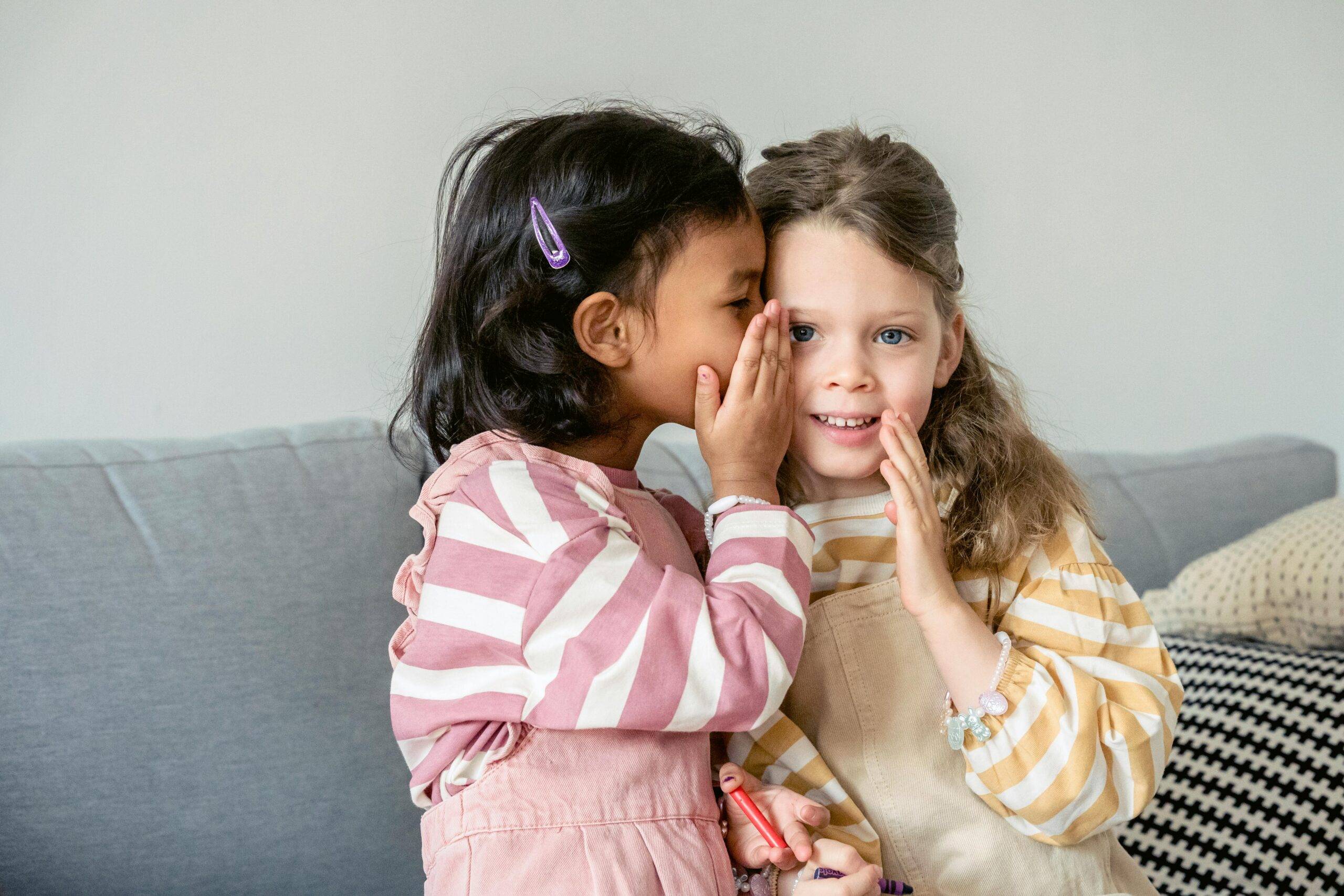Table of Contents
Preparing your child for their first sleepover involves practical considerations. This includes what to pack and the emotional preparations to ensure your child’s positive, enjoyable, and memorable experience. Make it another milestone!
We at Omega Pediatrics will guide you through the basics of what to pack and bring and provide valuable tips on preparing your child for his first sleepover. Being adequate, logistically, and mentally prepared will make it a worthwhile and positive experience.
What to Pack for Your Child’s Sleepover
Planning and preparation are important for this important activity for your child. Preparing involves packing essential items to ensure their comfort and well-being during the overnight stay. Here are some of the important things to bring along:
Clothing
Help your child pack comfortable sleepwear suitable for the activity. Consider the weather if any layering is needed. Don’t forget the extra clothes for the next day, ensuring they have clean attire for morning activities or returning home.
Make this sleepover a milestone by letting your child choose their favorite pajamas. On some occasions, the event may have a theme—a pink night for girls, a dinosaur night party, or a candy pajama party. Make it memorable by sticking to the event’s theme.
Other Necessary Personal Items
Other than clothing, there are other essential items to be included in the pack. Toiletries and personal hygiene come first. These are your child’s daily essentials—a toothbrush, toothpaste, hairbrush or comb, shampoo, conditioner, soap or body wash.
On top of personal hygiene stuff, other items are necessary. These are the medications and eyeglasses, whenever applicable. These are the things that should not be overlooked which your child typically uses for their daily routine
Other special personal care items, such as their towel or face wash, may also be included. Items that keep your child occupied could be their favorite book or magazine, a tablet, and a phone charger.
Small items need to be packed neatly and organized in a bag with multiple compartments so they’re easily accessible and cannot be easily misplaced. It’s recommended to teach your child to be organized and adequately prepared.
Familiar and Comfort Items
Let your child bring their favorite comfort items, such as a stuffed animal, plush toy, pillow, or blanket. These items provide security and reassurance. These make the new sleeping environment feel like their own space, making them relaxed during the night.
Additionally, familiar scents or textures evoke feelings of safety, which can be comforting in an unfamiliar setting. Tell your child that it’s perfectly fine to bring these items and that they can use them to make him feel secure and comfortable.
How to Prepare Your Child for the First Sleepover

Your child’s first sleepover activity can be an exciting yet nerve-wracking experience. You need to make adequate preparations and promote a positive and enjoyable experience for both your child and his friend.
1. Discuss the Activity
Have an open conversation about what a sleepover is and what to expect. Discuss the concept of staying overnight at someone else’s house. Provide reassurance and emphasize that it would be a fun and exciting opportunity to spend time with friends.
2. Familiarize Your child with the Host’s Home
If possible, visit the host’s home with your child before the activity. This pre-visit allows your child to become familiar with the surroundings and layout of the house.
Walking through the space, identifying the bedroom they will sleep in, and exploring common areas can help your child feel more comfortable and at ease. This is also an opportunity to meet the host’s family, creating a friendly atmosphere.
Familiarity with the environment can reduce anxiety and uncertainty. This enables your child to focus on enjoying the experience rather than feeling overwhelmed by unfamiliar surroundings. Be positive about the activity.
3. Prepare for Sleeping Arrangements
Ask the host if your child will be in a separate bed or if he will share the bed with his friend. Also, ask if a sleeping bag should be brought. Know what to expect regarding sleeping arrangements.
Explain to your child about the sleeping arrangement and that it’s common during such activities. Give assurance that he can still have a restful night’s sleep. Doing so helps your child be mentally prepared and feel more comfortable when it’s time to sleep.
4. Discuss the Schedule
Sit down with your child and talk about when the activity will start and end. Inform them about planned activities or special moments, such as movie time, games, or a shared meal. A clear schedule allows anticipation to mentally prepare for each segment.
This preparation lets your child feel more confident and less overwhelmed. It also helps them understand the flow of events and manage their expectations. If your child knows what to expect and can actively engage in the activities, they will feel more at ease.
5. Discuss Pickup Arrangements
Confirm with the host the time and location for picking up your child the next day. A clear plan ensures a smooth transition and avoids confusion or stress regarding logistics. It also reflects your commitment to punctuality and respect for the host’s schedule.
6. Talk About House Rules
Inform your child about the host’s house rules, such as screen time limits, mealtime behavior, and tidying up after. Remind them of their behavior, such as being polite and following instructions from the host or family members.
Discuss the importance of respecting the host’s rules and expectations. Doing so helps your child understand what’s expected of them as visitors, promoting a pleasant experience for everyone involved.
7. Discuss Bathroom and Hygiene Routines
Remind your child about their hygiene, such as brushing their teeth, washing hands, and using the bathroom. Tell your child to ask for toiletries at the host’s home and ask for bathroom help if needed.
Reinforcing toilet routines ensures that your child maintains regular hygiene habits and feels more at ease when using the facilities at the host’s house.
8. Talk About Homesickness
Let your child know that feeling homesick is normal and can happen when sleeping overnight. Discuss the coping strategies, such as engaging in fun activities, talking to the host or a trusted adult, or even calling home for a quick chat.
Also, encourage them to communicate their feelings openly and seek support when needed, emphasizing that their emotions are valid and that people can help them through any homesick moments.
9. Encourage Communication
Provide your child with a means of communication. Provide them with a cell phone or a predetermined time for a phone call. Knowing they can reach out to you offers a sense of security and comfort. Discuss when and how they can contact you if they need to.
A communication plan will make your child feel more confident and less anxious about being away from home. It also allows you to stay connected and address any concerns promptly, further enhancing their sense of safety during the activity.
10. Tell Your Child to Take It Easy

When arranging for the activity, your child should know his or her friend well. A familiar face provides security and makes the sleepover experience more enjoyable. Your child will feel at ease with a friend with whom they have a strong bond.
This familiarity can ease any anxiety about being away from home. They will have someone they can rely on and engage in familiar activities, making the sleepover a more comforting and enjoyable experience.
A familiar personality also increases the likelihood of successful social interactions and strengthens friendships.
11. Practice Conflict Resolution
Teach your child strategies for resolving conflicts with friends if disagreements arise during the sleepover. Emphasize the importance of empathy, listening, and finding mutually agreeable solutions.
Equipping your child with conflict-resolution skills promotes positive social interactions and helps them navigate potential conflicts that may arise during the sleepover.
Encourage them to communicate openly, actively listen to other’s perspectives, and work towards peaceful resolutions, fostering healthy relationships and building interpersonal skills.
12. Discuss Entertainment Options
Discuss activities or games your child can bring or suggest to keep themselves occupied during the sleepover. Consider shared interests with the host and discuss potential entertainment choices.
This conversation helps your child feel prepared and excited about engaging in enjoyable activities during the sleepover. It promotes active participation, fostering positive experiences and lasting memories.
13. Talk to the Hosts
For your child to have a more seamless sleepover experience, talk to the hosts about how he is at home and what his special needs are.
- Discuss Bedtime Routines
Talk to the host about their bedtime routines at home, such as reading a bedtime story or listening to calming music. Share this information with the host, so they can try to replicate those routines as closely as possible.
Maintaining familiar bedtime rituals can create a sense of continuity and help your child feel more comfortable and ready for sleep in the new environment. This facilitates a smooth transition to bedtime and promotes better sleep quality.
- Discuss Food Restrictions
It is crucial to inform the host about any dietary restrictions or allergies your child may have. Communicate specific food preferences, intolerances, or allergies so the host can plan meals and snacks accordingly.
This ensures that your child will have suitable food options during the sleepover and minimizes any risk of discomfort or allergic reactions.
Make Your Child’s First Sleepover a Memorable One
Your child may feel uneasy because it will be his first time sleeping at someone else’s home. Offer encouragement, expressing confidence in their ability to enjoy the experience. Reassure your child that you will be available for support if needed.
With your support and effort as parents, you boost your child’s self-assurance and alleviate any worries or anxieties they may have about the sleepover.
We at Omega Pediatrics want to ensure that your child has a good experience when achieving milestones. We provide information that could help you and your child have positive, memorable experiences.
FAQ
What should I pack for my child’s sleepover?
Essential items to pack for your child’s sleepover include comfortable sleepwear, toiletries, personal hygiene items, medications (if applicable), familiar comfort items like stuffed animals or blankets, and entertainment options like books or electronic devices.
When hosting a sleep-under, invite the kids to come dressed in their favorite pajamas (and you too!). They should also remember to bring:
Favorite Stuffed Animal or Beloved Blanket: Familiar comfort items to help them feel at home.
Pillow: An essential for a good night’s rest.
Sleeping Bag: Crucial for creating that cozy, sleep-under atmosphere.
After all, what’s a sleep-under without all the right gear? This ensures that your child has everything needed for a fun and comfortable experience.
How can I prepare my child for their first sleepover?
Prepare your child for their first sleepover by discussing the activity openly, familiarizing them with the host’s home, explaining sleeping arrangements and schedules, discussing pickup arrangements, reviewing house rules and hygiene routines, and addressing potential homesickness.
What can I do to ease my child’s anxiety about staying overnight at someone else’s house?
You can ease your child’s anxiety by encouraging open communication, providing reassurance, allowing them to bring familiar comfort items, discussing coping strategies for homesickness, and ensuring they have a means of contacting you during the sleepover.
How can I help my child resolve conflicts with friends during the sleepover?
Teach your child conflict-resolution skills, such as empathy, active listening, and finding mutually agreeable solutions. Encourage open communication, and remind them of the importance of respecting house rules and being polite.
What should I discuss with the hosts to ensure my child’s comfort during the sleepover?
Discuss bedtime routines, food restrictions, and any special needs or preferences your child may have with the hosts. Providing this information helps the hosts create a comfortable environment and accommodate your child’s needs.
What are great Family-Friendly Movie Options for a Sleepover?
Planning a sleep-under and need some great movie ideas? Choosing an age-appropriate film can make the evening magical for kids and stress-free for parents. Here are some charming movies that the whole family can enjoy:
Movies for Younger Kids (Ages 4-7 Mary Poppins: A timeless musical filled with enchanting songs and magical adventures.
Charlotte‘s Web: A heartwarming tale about friendship and loyalty.
The Peanuts Movie: Follow the beloved characters of Charlie Brown and Snoopy in this delightful animated film.
Movies for Older Kids (Ages 8-12)
The Princess Bride: An adventurous journey featuring romance, humor, and memorable characters.
School of Rock: A comedy about a wannabe rock star who turns a group of uptight kids into a mind-blowing rock band.
Moana: An epic adventure of a brave young girl embarking on a quest to save her island.
Toy Story: Follow Woody, Buzz, and the gang in their colorful escapades.
Movies that Appeal to All Ages
Ratatouille: A delightful story of a rat who dreams of becoming a chef in Paris.
Frozen: A captivating tale of two sisters and their journey through fantastical landscapes.
Paddington: A lovable bear’s adventures in London that will tickle everyone’s funny bone.
To enhance the movie experience, don’t forget the snacks! Easy, crowd-pleasing treats can make movie time even more special:
Popcorn: The quintessential movie snack.
Tortilla Chips with Nacho Cheese: A savory favorite.
Goodie Bags: Fill them with classic candies like Milk Duds and M&M’s for a sweet touch.
By selecting engaging movies and providing some delicious snacks, your sleep-under is sure to be a hit with both kids and parents alike!
What Snacks Can You Serve During a Movie at a Sleep-Under?
Choosing the perfect snacks for a movie during a sleep-under is crucial to setting the right mood. Here are some crowd-pleasers that you might want to consider:
Popcorn
Classic Butter Popcorn: Always a hit, easy to make, and perfect for munching.
Flavored Varieties: Try white cheddar, caramel, or even kettle corn for something different.
Chips and Dips
Tortilla Chips: Serve with nacho cheese, salsa, or guacamole.
Potato Chips: Pair with classic onion dip or a ranch-flavored dip for added flavor.
Sweet Treats
Candy Bags: Fill small bags with a mix of gummy bears, chocolate-covered raisins, and bite-sized candy bars.
Cookies: Classic chocolate chip or homemade oatmeal raisin cookies are always a treat.
Healthy Options
Fruit Kabobs: Alternate pieces of pineapple, strawberries, and grapes on skewers for a colorful and healthy option.
Veggie Platters: Baby carrots, cucumber slices, and cherry tomatoes with a side of hummus or ranch dip.
By providing a variety of snacks, you ensure there’s something enjoyable for everyone while they watch the movie.
What are the Best Games for a Sleep-Under Party?
Need to keep the kids entertained and active at a sleep-under party? Here are some engaging and fun games that can help ensure everyone has a great time.
Truth or Dare
This classic never gets old. Craft age-appropriate truths and dares to make the game more thrilling. For example:
Truths: “What’s the funniest prank you’ve ever played?” or “What’s your least favorite vegetable?”
Dares: “Dance like a chicken for 30 seconds” or “Eat a slice of lemon without making a face.”
Keep it light-hearted and fun, ensuring every participant feels comfortable.
Dance Party
Turn your living room into a mini disco! Play some kid-friendly music and let everyone show off their dance moves. YouTube tutorials can help teach them popular dances such as:
The Electric Slide
The Running Man
The Worm
Or, invent new moves and name them something silly for added fun.
Flashlight Tag
When it gets dark, grab the flashlights and head outdoors for an exciting game of flashlight tag. Set clear boundaries to ensure safety, like avoiding streets or dangerous areas. This game is sure to thrill and expend some energy.
Pillow Fight
Designate a safe area free of breakables, and let the pillow fight begin! Soft, fluffy pillows work best to keep things fun and harmless. To keep things fair and under control, consider having an adult act as a referee.
Sardines
Perfect for homes with lots of hiding spots, Sardines is an inverse hide-and-seek game. Here’s how it works:
One child (the sardine) hides while the others count.
The seekers then spread out to find the sardine.
When someone finds the sardine, they quietly join the hiding spot.
The game continues until everyone is packed together like sardines.
The last one searching becomes the sardine for the next round.
Offering these engaging games will help ensure your sleep-under party is a hit, keeping all the kids entertained and happy throughout the night.
What is a Sleep-Under?
A sleep-under is a fun twist on the traditional sleepover, perfect for younger children who aren’t ready for an all-night adventure. In this type of event, kids enjoy popular sleepover activities like watching movies, playing games, and eating snacks, but instead of staying the night, they head home before bedtime.
Key Features of a Sleep-Under:
Evening Fun Only: Activities are scheduled for the evening, allowing children to partake in all the excitement without the overnight stay.
Parental Pickup: Parents return to collect their kids before it gets too late, ensuring everyone gets home for a good night’s sleep.
Age-Appropriate: Ideal for younger kids who still benefit from the comfort of their own beds and familiar nighttime routines.
A sleep-under combines the thrill of a sleepover with the security of returning home, striking a perfect balance for younger partygoers and their parents.




